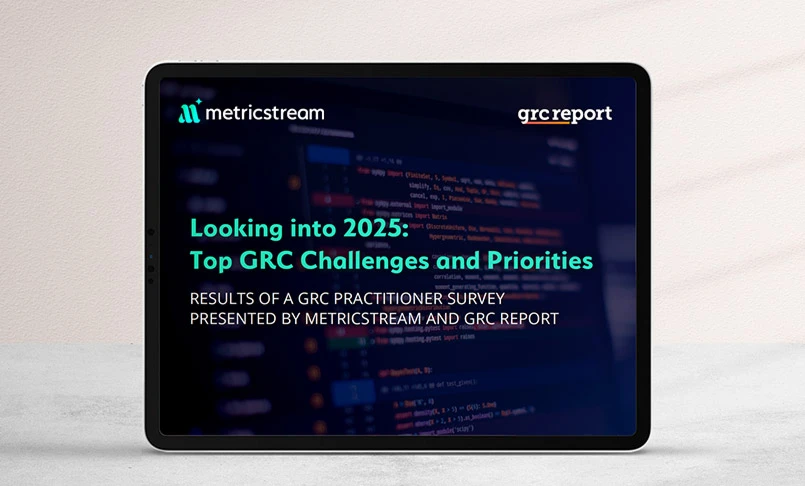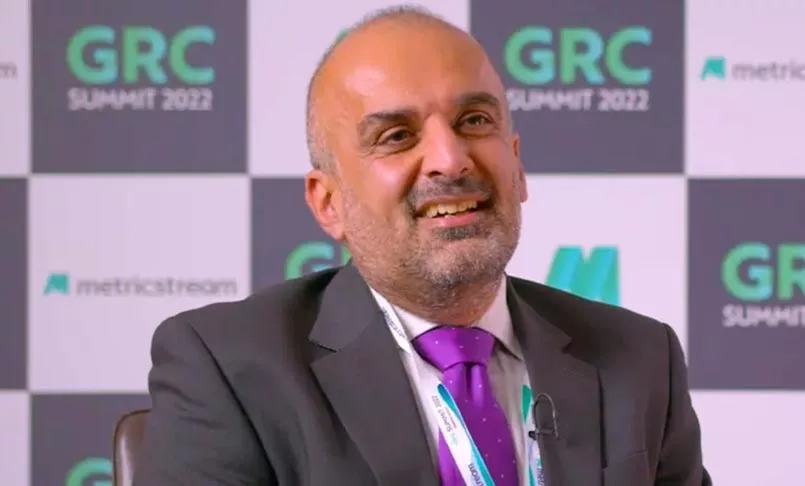Introduction
In today’s volatile business environment, financial risk management has become a cornerstone of organizational resilience and sustainability. From fluctuating market conditions to credit defaults and cyber threats, businesses are exposed to a wide array of financial risks that can threaten profitability and growth. Implementing a sound financial risk management strategy not only protects companies from unexpected losses but also enables smarter decision-making and long-term value creation.
This guide provides a comprehensive overview of financial risk management—what it is, who needs it, the different types, and how to build a robust framework for managing risk.
Key Takeaways
- Financial risk management helps organizations identify, assess, and mitigate risks that can negatively impact their financial performance.
- It encompasses various types of risks including market, credit, liquidity, operational, and legal risks.
- Every business, regardless of size or industry, can benefit from an effective financial risk management strategy.
- A structured risk management process ensures compliance, supports business continuity, and fosters stakeholder trust.
What is Financial Risk Management?
Financial risk management refers to the process of identifying, analyzing, and responding to potential risks that may affect a company’s financial health. These risks might arise from external factors like interest rate changes or internal issues like poor operational processes.
Effective financial risk management goes beyond simply avoiding losses—it empowers organizations to make informed decisions that balance risk and opportunity. By incorporating analytical tools, strategic planning, and governance protocols, companies can proactively address threats before they escalate.
Who Needs Financial Risk Management?
Every business that handles money or financial transactions—no matter the size or sector—needs implementation of a financial risk management framework. This includes:
- Large corporations who face complex risk exposures across global markets.
- Small and medium-sized enterprises (SMEs), which often lack the buffer to absorb unexpected financial shocks.
- Banks and financial institutions, which must adhere to strict regulatory frameworks like Basel III and are highly vulnerable to credit, liquidity, and market risk.
- Startups and tech firms which must manage investor capital, pricing volatility, and compliance with evolving regulations.
Whether it's a multinational conglomerate or a growing startup, risk management is essential for long-term financial stability and success.
Types of Financial Risk Management
Different types of financial risks require tailored strategies. Below are the core categories:
- Market Risk Arises from fluctuations in financial markets, such as interest rates, stock prices, or foreign exchange rates. Example: A company importing goods from Europe faces currency risk due to the Euro–Indian rupee exchange rate changes.
- Credit Risk Occurs when borrowers or customers fail to repay debts. Example: A retail lender offering unsecured personal loans faces higher credit risk compared to mortgage lenders.
- Liquidity Risk Involves the inability to meet short-term financial obligations due to a lack of liquid assets. Example: A business that has most of its assets tied up in long-term investments may struggle to pay its suppliers.
- Operational Risk Stems from internal process failures, employee errors, fraud, or technology issues. Example: A system outage during peak hours causing transaction delays.
- Legal and Compliance Risk Results from lawsuits or regulatory violations. Example: A fintech company mismanaging customer data may face penalties under the CCPA or GDPR.
Key Components of Financial Risk Management
A well-structured financial risk management strategy is built on several foundational components that work together to protect an organization’s financial health and support strategic decision-making:
- Risk Identification
- The first step involves pinpointing all possible internal and external financial risks. These could stem from credit exposure, volatile interest rates, currency fluctuations, operational inefficiencies, or evolving regulatory requirements.
- Identification methods include historical data reviews, SWOT analyses, stakeholder interviews, and brainstorming sessions.
- Example: A logistics company might identify currency exchange risk due to frequent cross-border payments.
- Risk Assessment
- Once risks are identified, organizations evaluate their likelihood of occurrence and potential impact. This step helps prioritize threats and determines the level of response needed.
- Quantitative tools (e.g., Value-at-Risk or stress testing) and qualitative methods (e.g., expert judgment or heat maps) are used to gauge exposure.
- Example: A bank may calculate the probability of a borrower defaulting using internal and external credit scoring models.
- Risk Response and Control Measures
- This component involves deciding how to address each risk. The four main options are:
- Avoidance – stop activities that lead to the risk.
- Mitigation – reduce the probability or impact.
- Transference – shift risk via contracts or insurance.
- Acceptance – acknowledge and monitor low-priority risks.
- Example: An organization might use hedging instruments to mitigate foreign exchange risk.
- This component involves deciding how to address each risk. The four main options are:
- Monitoring and Reporting
- Effective risk management isn’t a one-time activity—it requires ongoing monitoring and regular reporting.
- Organizations should track key risk indicators (KRIs), generate risk dashboards, and conduct periodic audits to ensure control effectiveness.
- Transparent reporting enables informed decisions and builds internal and external trust.
- Governance and Policy Frameworks
- A strong governance structure defines who is responsible for what.
- Policies and procedures must be clearly documented and aligned with corporate objectives and compliance requirements.
- A risk management committee or internal audit function often oversees adherence.
- Example: A multinational corporation may implement region-specific policies to stay compliant with local financial laws.
Financial Risk Management Process
A structured financial risk management process ensures risks are managed methodically and consistently. Here's a detailed walkthrough:
- Establish the Context
- Understand your business goals, stakeholder expectations, and regulatory landscape.
- Define your risk appetite—how much risk you’re willing to take to achieve strategic objectives.
- Example: A fintech startup may accept higher innovation risk but maintain zero tolerance for non-compliance.
- Identify Financial Risks
- Use internal audits, data analytics, and external market trends to pinpoint threats.
- Involve cross-functional teams to get a holistic view of financial exposures.
- Example: A business might identify supplier concentration as a liquidity risk.
- Analyze and Evaluate Risks
- Assign a likelihood and impact score to each risk using tools like:
- Scenario analysis
- Value-at-Risk (VaR)
- Monte Carlo simulations
- This helps rank risks and allocate resources accordingly.
- Assign a likelihood and impact score to each risk using tools like:
- Develop Risk Treatment Plans
- Design specific actions to address each high-priority risk:
- Use insurance to transfer risk
- Diversify investments
- Create credit vetting processes
- These plans must be practical, cost-effective, and aligned with business goals.
- Design specific actions to address each high-priority risk:
- Implement Controls and Mitigation Strategies
- Deploy the selected risk treatments, whether technical (e.g., firewalls), operational (e.g., approvals and audits), or financial (e.g., derivatives).
- Ensure these controls are integrated into daily workflows and supported by technology.
- Monitor and Review
- Track performance through KPIs and KRIs.
- Conduct regular internal audits, compliance reviews, and updates based on environmental or operational changes.
- Example: A sudden regulatory change may prompt a policy revision or a new risk control.
Why is Financial Risk Management Important?
Financial risk management is important for several compelling reasons:
- Prevents Losses
- Early identification and action reduce exposure to potentially devastating losses.
- Example: Companies that used hedging strategies during COVID-19 weathered raw material price shocks better.
- Enhances Decision-Making
- With accurate risk forecasts and impact models, leaders can make smarter investment, financing, and pricing decisions.
- Ensures Regulatory Compliance
- Financial institutions, healthcare providers, and publicly traded companies must meet stringent regulations like Basel III, SOX, and IFRS.
- A robust risk management program avoids penalties and reputational damage.
- Builds Investor and Customer
- Trust Transparency and preparedness demonstrate reliability and attract both investors and clients.
- Especially in ESG-conscious markets, risk management is a trust signal.
- Supports Long-Term Growth
- Managing risk isn’t just defensive—it’s a growth enabler. Companies can seize new opportunities with confidence when they know their risk exposure.
How to Create a Financial Risk Management Framework
Building a robust financial risk management framework requires an integrated, step-by-step approach that aligns business objectives with risk oversight mechanisms. The framework must be dynamic, scalable, and capable of adapting to evolving threats and regulations. Below is a structured process to help your organization implement and maintain an effective financial risk management system:
Define Objectives and Risk Tolerance
- Why it matters: A clear understanding of strategic objectives and acceptable risk levels allows you to tailor risk responses and avoid over- or under-mitigation.
- How to do it: Collaborate with executive leadership and key stakeholders to define business goals, desired returns, and acceptable loss limits. Document the organization’s risk appetite (general tolerance for risk) and risk thresholds (specific limits or triggers).
- Example: A bank may accept certain levels of credit risk to increase lending profitability but have zero tolerance for regulatory breaches.
Assemble a Cross-Functional Team
- Why it matters: Financial risk impacts multiple areas, from operations to compliance. An inclusive team ensures all risk perspectives are considered.
- Who to involve:
- Finance: For liquidity, credit, and market risk.
- IT: For cybersecurity and operational technology risks.
- Legal & Compliance: To ensure regulatory alignment.
- Operations & HR: To evaluate fraud, process gaps, and workforce risks.
- External Experts: Engage auditors or risk consultants for independent assessments and benchmarking.
- Tip: Establish clear roles and a risk governance committee to oversee implementation.
Map Risks to Business Processes
- Why it matters: Linking risks to specific functions and workflows helps organizations identify where controls are needed most.
- How to do it:
- Use tools like RACI charts (Responsible, Accountable, Consulted, Informed) to assign accountability.
- Swimlane diagrams visualize risks across departments and systems.
- Risk registers document each risk, its likelihood, impact, owner, and mitigation status.
- Example: Linking foreign exchange rate volatility to international procurement workflows allows treasury teams to hedge effectively.
Select Risk Management Tools
- Why it matters: Manual tracking is inefficient and error-prone. Risk management platforms enable automation, consistency, and real-time insights.
- What to look for:
- Integration with existing ERP or accounting software.
- Customizable dashboards and alerting systems.
- Support for modeling, stress testing, and compliance tracking.
- Popular tools:
- MetricStream: Enterprise risk and compliance management.
- RSA Archer: Governance, risk, and compliance (GRC) automation
- SAP GRC: Risk-aware decision-making for SAP environments.
- LogicManager or Riskonnect: Modular, scalable solutions for SMEs and large enterprises.
Document and Communicate Policies
- Why it matters: Policies guide consistent behavior and accountability across the organization.
- How to do it:
- Draft detailed documents outlining types of risks, response protocols, reporting lines, and escalation procedures.
- Define ownership for each risk and control.
- Communicate policies via intranet portals, handbooks, and periodic updates.
- Tip: Review policies annually or during significant operational or regulatory changes.
Train Employees
- Why it matters: Even the most advanced frameworks fail without informed and vigilant personnel.
- What to include in training:
- Recognizing red flags in financial fraud or cyberattacks.
- Regulatory awareness (e.g., SOX, IFRS, Basel III).
- Reporting procedures and ethical conduct expectations.
- Best practices:
- Use role-specific training modules (e.g., frontline finance vs. executive risk owners).
- Include simulation exercises or phishing drills for high-risk departments.
Monitor, Audit, and Improve
- Why it matters: Risk management isn’t static—ongoing evaluation ensures controls remain effective in changing environments.
- Monitoring mechanisms:
- Key Risk Indicators (KRIs): Real-time metrics (e.g., days sales outstanding, overdue loans, transaction anomalies).
- Internal audits and control self-assessments (CSAs): Help identify weaknesses before external issues arise.
- Root cause analysis: After incidents, use RCA to identify process failures and implement corrective action.
- Improve over time:
- Schedule quarterly or biannual reviews.
- Benchmark against industry peers.
- Update risk registers and tools regularly.
How MetricStream Can Help
While financial risk management is essential to maintaining a healthy bottom line, it's only one piece of the broader risk puzzle. In today’s complex business environment, operational risks—ranging from process failures and cyber threats to third-party disruptions—can be just as damaging. MetricStream’s AI-first Connected GRC simplifies Governance, Risk, and Compliance (GRC) with purpose-built solutions, including the Operational Risk Management product, that empower organizations to identify, assess, monitor, and mitigate operational risks with confidence. By integrating risk data, streamlining workflows, and delivering real-time insights, MetricStream helps you build a resilient, risk-aware culture across the enterprise. Learn more about how we can support your risk management journey.
To know more, request a personalized demo.
Frequently Asked Questions (FAQ)
What is financial risk management?
Financial risk management is the process of identifying, analyzing, and mitigating risks that could negatively affect an organization’s financial health.
Why is financial risk management important?
It helps protect businesses from financial losses, ensures compliance, improves decision-making, and builds resilience against market volatility.
What are the key types of financial risks?
The main types include market risk, credit risk, liquidity risk, operational risk, and legal or compliance risk.
In today’s volatile business environment, financial risk management has become a cornerstone of organizational resilience and sustainability. From fluctuating market conditions to credit defaults and cyber threats, businesses are exposed to a wide array of financial risks that can threaten profitability and growth. Implementing a sound financial risk management strategy not only protects companies from unexpected losses but also enables smarter decision-making and long-term value creation.
This guide provides a comprehensive overview of financial risk management—what it is, who needs it, the different types, and how to build a robust framework for managing risk.
- Financial risk management helps organizations identify, assess, and mitigate risks that can negatively impact their financial performance.
- It encompasses various types of risks including market, credit, liquidity, operational, and legal risks.
- Every business, regardless of size or industry, can benefit from an effective financial risk management strategy.
- A structured risk management process ensures compliance, supports business continuity, and fosters stakeholder trust.
Financial risk management refers to the process of identifying, analyzing, and responding to potential risks that may affect a company’s financial health. These risks might arise from external factors like interest rate changes or internal issues like poor operational processes.
Effective financial risk management goes beyond simply avoiding losses—it empowers organizations to make informed decisions that balance risk and opportunity. By incorporating analytical tools, strategic planning, and governance protocols, companies can proactively address threats before they escalate.
Every business that handles money or financial transactions—no matter the size or sector—needs implementation of a financial risk management framework. This includes:
- Large corporations who face complex risk exposures across global markets.
- Small and medium-sized enterprises (SMEs), which often lack the buffer to absorb unexpected financial shocks.
- Banks and financial institutions, which must adhere to strict regulatory frameworks like Basel III and are highly vulnerable to credit, liquidity, and market risk.
- Startups and tech firms which must manage investor capital, pricing volatility, and compliance with evolving regulations.
Whether it's a multinational conglomerate or a growing startup, risk management is essential for long-term financial stability and success.
Different types of financial risks require tailored strategies. Below are the core categories:
- Market Risk Arises from fluctuations in financial markets, such as interest rates, stock prices, or foreign exchange rates. Example: A company importing goods from Europe faces currency risk due to the Euro–Indian rupee exchange rate changes.
- Credit Risk Occurs when borrowers or customers fail to repay debts. Example: A retail lender offering unsecured personal loans faces higher credit risk compared to mortgage lenders.
- Liquidity Risk Involves the inability to meet short-term financial obligations due to a lack of liquid assets. Example: A business that has most of its assets tied up in long-term investments may struggle to pay its suppliers.
- Operational Risk Stems from internal process failures, employee errors, fraud, or technology issues. Example: A system outage during peak hours causing transaction delays.
- Legal and Compliance Risk Results from lawsuits or regulatory violations. Example: A fintech company mismanaging customer data may face penalties under the CCPA or GDPR.
A well-structured financial risk management strategy is built on several foundational components that work together to protect an organization’s financial health and support strategic decision-making:
- Risk Identification
- The first step involves pinpointing all possible internal and external financial risks. These could stem from credit exposure, volatile interest rates, currency fluctuations, operational inefficiencies, or evolving regulatory requirements.
- Identification methods include historical data reviews, SWOT analyses, stakeholder interviews, and brainstorming sessions.
- Example: A logistics company might identify currency exchange risk due to frequent cross-border payments.
- Risk Assessment
- Once risks are identified, organizations evaluate their likelihood of occurrence and potential impact. This step helps prioritize threats and determines the level of response needed.
- Quantitative tools (e.g., Value-at-Risk or stress testing) and qualitative methods (e.g., expert judgment or heat maps) are used to gauge exposure.
- Example: A bank may calculate the probability of a borrower defaulting using internal and external credit scoring models.
- Risk Response and Control Measures
- This component involves deciding how to address each risk. The four main options are:
- Avoidance – stop activities that lead to the risk.
- Mitigation – reduce the probability or impact.
- Transference – shift risk via contracts or insurance.
- Acceptance – acknowledge and monitor low-priority risks.
- Example: An organization might use hedging instruments to mitigate foreign exchange risk.
- This component involves deciding how to address each risk. The four main options are:
- Monitoring and Reporting
- Effective risk management isn’t a one-time activity—it requires ongoing monitoring and regular reporting.
- Organizations should track key risk indicators (KRIs), generate risk dashboards, and conduct periodic audits to ensure control effectiveness.
- Transparent reporting enables informed decisions and builds internal and external trust.
- Governance and Policy Frameworks
- A strong governance structure defines who is responsible for what.
- Policies and procedures must be clearly documented and aligned with corporate objectives and compliance requirements.
- A risk management committee or internal audit function often oversees adherence.
- Example: A multinational corporation may implement region-specific policies to stay compliant with local financial laws.
A structured financial risk management process ensures risks are managed methodically and consistently. Here's a detailed walkthrough:
- Establish the Context
- Understand your business goals, stakeholder expectations, and regulatory landscape.
- Define your risk appetite—how much risk you’re willing to take to achieve strategic objectives.
- Example: A fintech startup may accept higher innovation risk but maintain zero tolerance for non-compliance.
- Identify Financial Risks
- Use internal audits, data analytics, and external market trends to pinpoint threats.
- Involve cross-functional teams to get a holistic view of financial exposures.
- Example: A business might identify supplier concentration as a liquidity risk.
- Analyze and Evaluate Risks
- Assign a likelihood and impact score to each risk using tools like:
- Scenario analysis
- Value-at-Risk (VaR)
- Monte Carlo simulations
- This helps rank risks and allocate resources accordingly.
- Assign a likelihood and impact score to each risk using tools like:
- Develop Risk Treatment Plans
- Design specific actions to address each high-priority risk:
- Use insurance to transfer risk
- Diversify investments
- Create credit vetting processes
- These plans must be practical, cost-effective, and aligned with business goals.
- Design specific actions to address each high-priority risk:
- Implement Controls and Mitigation Strategies
- Deploy the selected risk treatments, whether technical (e.g., firewalls), operational (e.g., approvals and audits), or financial (e.g., derivatives).
- Ensure these controls are integrated into daily workflows and supported by technology.
- Monitor and Review
- Track performance through KPIs and KRIs.
- Conduct regular internal audits, compliance reviews, and updates based on environmental or operational changes.
- Example: A sudden regulatory change may prompt a policy revision or a new risk control.
Financial risk management is important for several compelling reasons:
- Prevents Losses
- Early identification and action reduce exposure to potentially devastating losses.
- Example: Companies that used hedging strategies during COVID-19 weathered raw material price shocks better.
- Enhances Decision-Making
- With accurate risk forecasts and impact models, leaders can make smarter investment, financing, and pricing decisions.
- Ensures Regulatory Compliance
- Financial institutions, healthcare providers, and publicly traded companies must meet stringent regulations like Basel III, SOX, and IFRS.
- A robust risk management program avoids penalties and reputational damage.
- Builds Investor and Customer
- Trust Transparency and preparedness demonstrate reliability and attract both investors and clients.
- Especially in ESG-conscious markets, risk management is a trust signal.
- Supports Long-Term Growth
- Managing risk isn’t just defensive—it’s a growth enabler. Companies can seize new opportunities with confidence when they know their risk exposure.
Building a robust financial risk management framework requires an integrated, step-by-step approach that aligns business objectives with risk oversight mechanisms. The framework must be dynamic, scalable, and capable of adapting to evolving threats and regulations. Below is a structured process to help your organization implement and maintain an effective financial risk management system:
Define Objectives and Risk Tolerance
- Why it matters: A clear understanding of strategic objectives and acceptable risk levels allows you to tailor risk responses and avoid over- or under-mitigation.
- How to do it: Collaborate with executive leadership and key stakeholders to define business goals, desired returns, and acceptable loss limits. Document the organization’s risk appetite (general tolerance for risk) and risk thresholds (specific limits or triggers).
- Example: A bank may accept certain levels of credit risk to increase lending profitability but have zero tolerance for regulatory breaches.
Assemble a Cross-Functional Team
- Why it matters: Financial risk impacts multiple areas, from operations to compliance. An inclusive team ensures all risk perspectives are considered.
- Who to involve:
- Finance: For liquidity, credit, and market risk.
- IT: For cybersecurity and operational technology risks.
- Legal & Compliance: To ensure regulatory alignment.
- Operations & HR: To evaluate fraud, process gaps, and workforce risks.
- External Experts: Engage auditors or risk consultants for independent assessments and benchmarking.
- Tip: Establish clear roles and a risk governance committee to oversee implementation.
Map Risks to Business Processes
- Why it matters: Linking risks to specific functions and workflows helps organizations identify where controls are needed most.
- How to do it:
- Use tools like RACI charts (Responsible, Accountable, Consulted, Informed) to assign accountability.
- Swimlane diagrams visualize risks across departments and systems.
- Risk registers document each risk, its likelihood, impact, owner, and mitigation status.
- Example: Linking foreign exchange rate volatility to international procurement workflows allows treasury teams to hedge effectively.
Select Risk Management Tools
- Why it matters: Manual tracking is inefficient and error-prone. Risk management platforms enable automation, consistency, and real-time insights.
- What to look for:
- Integration with existing ERP or accounting software.
- Customizable dashboards and alerting systems.
- Support for modeling, stress testing, and compliance tracking.
- Popular tools:
- MetricStream: Enterprise risk and compliance management.
- RSA Archer: Governance, risk, and compliance (GRC) automation
- SAP GRC: Risk-aware decision-making for SAP environments.
- LogicManager or Riskonnect: Modular, scalable solutions for SMEs and large enterprises.
Document and Communicate Policies
- Why it matters: Policies guide consistent behavior and accountability across the organization.
- How to do it:
- Draft detailed documents outlining types of risks, response protocols, reporting lines, and escalation procedures.
- Define ownership for each risk and control.
- Communicate policies via intranet portals, handbooks, and periodic updates.
- Tip: Review policies annually or during significant operational or regulatory changes.
Train Employees
- Why it matters: Even the most advanced frameworks fail without informed and vigilant personnel.
- What to include in training:
- Recognizing red flags in financial fraud or cyberattacks.
- Regulatory awareness (e.g., SOX, IFRS, Basel III).
- Reporting procedures and ethical conduct expectations.
- Best practices:
- Use role-specific training modules (e.g., frontline finance vs. executive risk owners).
- Include simulation exercises or phishing drills for high-risk departments.
Monitor, Audit, and Improve
- Why it matters: Risk management isn’t static—ongoing evaluation ensures controls remain effective in changing environments.
- Monitoring mechanisms:
- Key Risk Indicators (KRIs): Real-time metrics (e.g., days sales outstanding, overdue loans, transaction anomalies).
- Internal audits and control self-assessments (CSAs): Help identify weaknesses before external issues arise.
- Root cause analysis: After incidents, use RCA to identify process failures and implement corrective action.
- Improve over time:
- Schedule quarterly or biannual reviews.
- Benchmark against industry peers.
- Update risk registers and tools regularly.
While financial risk management is essential to maintaining a healthy bottom line, it's only one piece of the broader risk puzzle. In today’s complex business environment, operational risks—ranging from process failures and cyber threats to third-party disruptions—can be just as damaging. MetricStream’s AI-first Connected GRC simplifies Governance, Risk, and Compliance (GRC) with purpose-built solutions, including the Operational Risk Management product, that empower organizations to identify, assess, monitor, and mitigate operational risks with confidence. By integrating risk data, streamlining workflows, and delivering real-time insights, MetricStream helps you build a resilient, risk-aware culture across the enterprise. Learn more about how we can support your risk management journey.
To know more, request a personalized demo.
What is financial risk management?
Financial risk management is the process of identifying, analyzing, and mitigating risks that could negatively affect an organization’s financial health.
Why is financial risk management important?
It helps protect businesses from financial losses, ensures compliance, improves decision-making, and builds resilience against market volatility.
What are the key types of financial risks?
The main types include market risk, credit risk, liquidity risk, operational risk, and legal or compliance risk.








